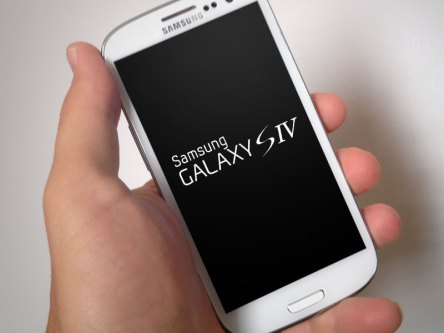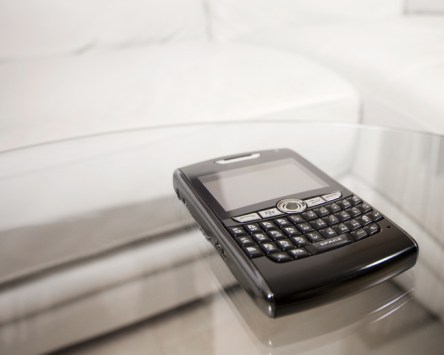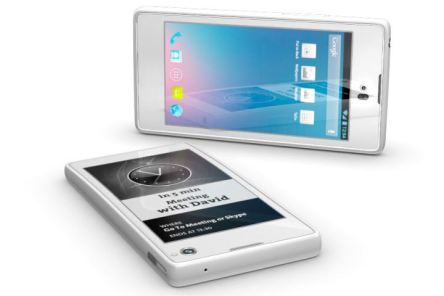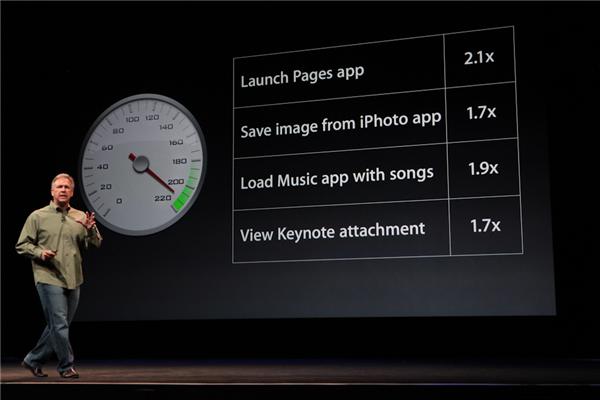Samsung has announced that it is Ready 4 the show, inviting fans on March 14th to New York for a special event where the newest device from the South Korean company will stand in the spotlight. The event will be live streamed on YouTube, announcing the next Galaxy. The star will be the Galaxy S IV. At the Mobile World Congress in Barcelona the focus was on smartphones, but Samsung preferred to reveal the new 5.5-inch version of its Galaxy Note II tablet, leaving the descendant of GS III away from the curious audience. Chances are that this marketing strategy has been encouraged (if not triggered) by the requests received from the US carriers to hold the event in the US. This will be a premiere for Samsung, Samsung Galaxy S IV will be the first Korean device to be launched in the U.S. – GS III had its grand event in London last May, more than two months after the annual biggest trade show of the mobile industry. Some leaks landed under the curious eyes of the media; a second set of leaks made their eyes even bigger, what’s the latest challenge Samsung has prepared for Apple? The leak showcases a pretty fast smartphone: 1.9GHz Qualcom Snapdragon 600 processor 2GB RAM 4G LTE support 3100 mAh battery Bluetooth 5.0 16/32/64GB storage options Removable SD card slot (up to 64GB) 10-13MP rear-facing camera Multi-purpose/Dedicated camera button Android 4.2 Jelly Bean OS A real shame is that the much awaited device, contrary to some of the rumors, won’t be the first handset to use flexible AMOLED screen – a tough, yet flexible material that makes the display virtually crack-proof. Instead it might have a higher resolution, at 1080PPI, and maybe a bigger display (not too...
BlackBerry Buzz
RIM's new OS comes out Jan. 30
Once considered the go-to phone for the business elite, today BlackBerry struggles to stay above water in a marketplace dominated by iOS and Android operating systems. Three years ago, Research in Motion (RIM) held 50 percent of the smartphone market in the US; in September of 2011 there were eighty million worldwide subscribers to BlackBerry, and 200 million shipped smartphones. But with no newly released device in over a year, BlackBerry now holds less than 5 percent of the smartphone market. Corporate giants have been stepping away from using BlackBerry devices, giving the exodus heft and volume. Marissa Mayer, Yahoo’s CEO, told Fortune that her company is one of them, moving “from BlackBerries to smartphones.“ “One of the really important things for Yahoo’s strategy moving forward is mobile,” Mayer told the magazine. “So it was really important that our engineers, our salespeople, really everyone throughout our whole organization really understand Android, iPhones, and, you know, Windows 8 and really get a sense of what’s happening there and how to create an amazing experience… so we decided we wanted to get everyone upgraded to smartphones.” Goldman Sachs employees were given the option to use iPhones in fall 2012. The White House, which previously used the BlackBerry for security reasons, recently started supporting the iPhone (President Obama reportedly uses his iPad during cabinet meetings). BlackBerry’s popularity has been dropping considerably, even the most loyal users are either thinking about replacing their devices, or are already carrying two devices, the secondary one being an iPhone or an Android. CIO writer Al Sacco wrote a thoughtful piece that sums up the current situation in an ingenuous manner: users love their BlackBerry devices for the keyboard, notification systems and messaging capabilities, but at the same time they are very...
Yo, YotaPhone
Two-sided Russian smartphone
The ‘YotaPhone’, a two-sided smartphone out of Russia, has been a topic of much tech chatter for the past few days. Industry buzz calls the development a surprise, as Russian technology developers have thus far kept a low profile in the mobile phone market. Will they profoundly impact our next generation of smartphones? With this new product, CEO Vladislav Martynov is trying to make an entrance and change the smartphone landscape via innovation, something he thinks has been missing from the market recently. Think your iPhone is boring? He agrees. Fighting back is event in the prototype phone design, which has a unique dual-screen, with one screen on each side of the device. The front of the phone has the traditional LCD screen and the back has an electronic-paper display (E-Ink) that’s black and white. This combination of screens supposedly offers a longer battery life (+50%) by dividing different information on each of them – the frontal one will allow working with apps, texts and calls, while the E-Ink side is designed for reading news and books, for reminders and calendar appointments, missed calls and other notifications. The electronic-paper side would be easier to read in sunlight, but would hardly affect the phone’s 2,100 mAh battery. Martynov believes that the prototype will be a success, commenting: “two years ago we were not so dependent on all the kinds of information we consume now, from Facebook and Twitter to news and other RSS feeds. The smartphone is now a window onto this virtual life, but today there’s a lot of disappointment when you miss information. Our electronic paper display with our applications will remove this irritation.” (BBC) Early reviews say there are some limitations to the E-Ink screen – it doesn’t accept touch input, relying...
Traveling Light
Apps for the road
The holiday season is official upon us. Whether you’re traveling near or far to visit friends and family this year, there are dozens of smartphone apps you can download to help you get where you’re going – and help you navigate a new city once you get there. Here are a few recommended apps to download before you hit the road – or fly the friendly skies: Kayak: An excellent all around app from a website that’s been around for almost a decade now. Search for last minute flights, hotels, car rentals. (iOS or Android) The nice thing about Kayak is that you can also search travel site competitors including Expedia, Priceline, Hotwire, and Hotels.com. Hipmunk: Similar to Kayak, you can search for hotels and flights but an added convenience is the way they present the data in an organized timeline so it’s easy to read and compare with your schedule. Plus, once you choose your ideal travel itinerary, it easily integrates with Google calendar so you have it on the go. (iOS or Android) The Weather Channel: Unlike the free weather app that may have come on your phone, The Weather Channel app provides detailed 10 day forecasts. With ultra-local forcasts and animated radar, it’s an excellent free upgrade option. (iOS or Android) Road Ninja: In need of fuel for your car or your family? Download Road Ninja (iOS or Android) to see what’s coming up on the next exits. (iOS or Android) HopStop: If you’re in the city this week and using public transportation for your travel needs then HopStop is your one stop shop. With information from more than 62 major cities, it’s a complete guide to public transportation, walking directions, taxis, and car rentals. (iOS or Android) There are endless...
Let’s talk smartphones
Apple Conference 2012
Ever since Apple’s rebirth as a tech leader, the company’s release conference is one of the most talked about industry events of the year. The tight-lipped culture of Apple usually means that Mac rumors were largely speculative – no one on the outside really knew what to expect until the day finally arrived. While there were a number of upgrades and improvements announced during Wednesday’s iPhone 5 release announcement, I was disappointed to see that there weren’t many surprises. One of the pillar traits of the conference, a true reveal of the new product features, was toppled thanks to a number of leaks during the last few weeks, the majority of which turned out to be true. Here’s what Apple confirmed today: Taller screen: It’s still the same width but Apple has increased the height from 3.5” to 4”. It’s still one of the smallest in the market so why does this matter? According to Apple, it improves user experience by providing more visible space above the virtual keyboard but by keeping the width the same you can still comfortably use the iPhone with one hand. Touch screen: Touch sensors were built into the display glass which enabled Apple to bring the phone down to a slim 7.6mm thick. 4G LTE: A consistent point of argument for competitors and a pain point for Apple fans during the 4S release last year, the iPhone 5 does have LTE now and Apple claims to have done it right by engineering around the standard battery suck that is traditional LTE service. Aluminum backing: Opposed to the glass backing that we saw on previous versions, the iPhone 5 housing is glass on the front and aluminum on the back, a reflection of their notebook design. A6 CPU Chip: The competitors are all running the Dual-core 1.5 GHz Snapdragon S4 and while we don’t have a comparison chart for Snapdragon vs. A6 we can see that Apple has given users a significant boost in performance (image, above, from CNET.com) from their previous A5 chip. Camera: Few improvements were made here from the 4S regarding resolution but it does claim faster photo capture, a low light mode, a built in stabilizer, an improvement to the panoramic photo setting, as well as the ability to snap pictures while shooting video. Microphones: Apple added another microphone from the 4S for a total of 3; they can be found on the front bottom, top, and the backside top near the camera. New connector: If you’ve had an iPod at all since 2003 you are familiar with this 30 pin connector, nicknamed Lightning. A few additional upgrades will be coming from the new operating system, iOS 6, update that will be released on Tuesday, September 19. When can they be ordered and how much does it cost? Devices can be pre-ordered Friday, September 14 and phones will arrive in stores exactly one week later. The price point hasn’t changed for the newest phone; with a new two year contract a 16GB will cost $199, 32GB $299, and 64GB $399. If you’re willing to sacrifice a few upgrades you’ll be able to pick up the 4S 16GB for $99, or an 8GB iPhone 4 for free. One big big disappointment is the lack of NFC (near-field communication) which has been available on Android phones for over a year. The technology is still in adoption infancy but is making significant progress with programs like Google Wallet. However, looking at the way Apple handled LTE, perhaps they’re simply not happy with the current technology and are looking for a way to do it better. If you’ve looked at the numbers you know that despite all the hype, Apple doesn’t come close to a majority market share for consumer smartphones – Android has that title with over 68%. That being said, Apple does have devoted (and vocal) user-enthusiasts. There has always been an outstanding...





